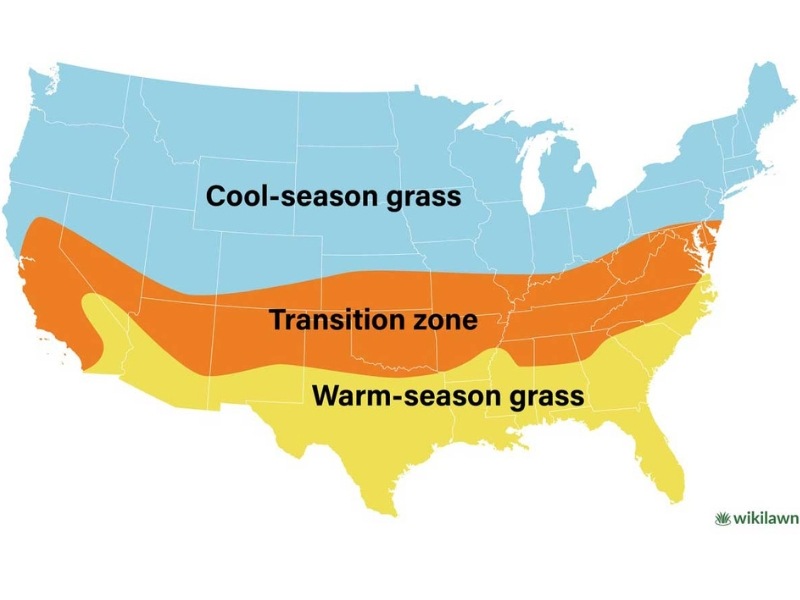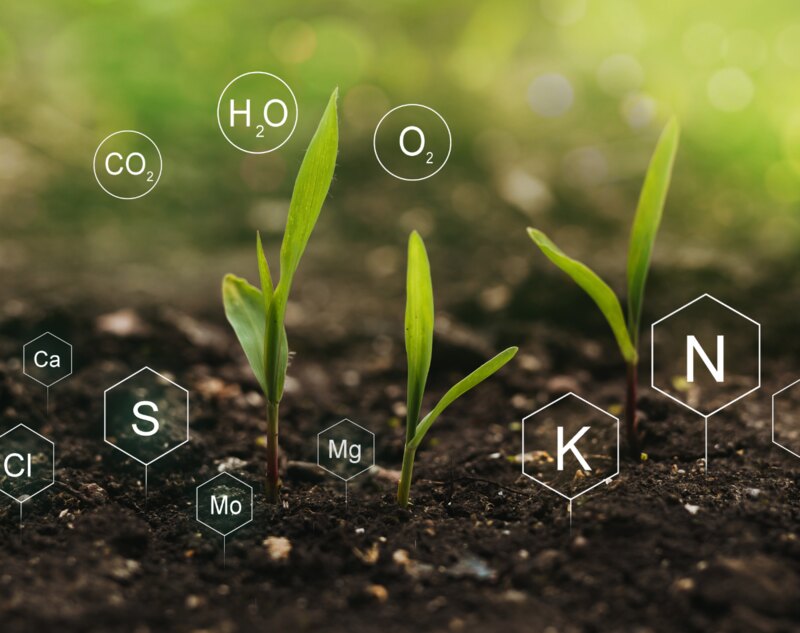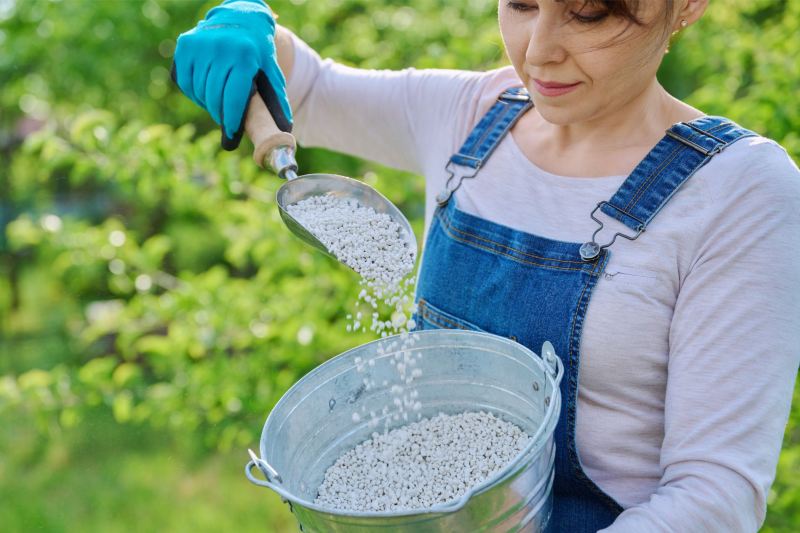The Ideal Lawn Fertilizer Schedule
BY TAHA JAVED | JULY 27TH, 2023 | BLOG, LAWN CAREFertilizer is like the fuel that your grass requires to thrive, providing it with essential nutrients to keep it alive and healthy. But fertilizer is only effective if you apply it at the right time of year when your grass is able to absorb those nutrients. Follow this ideal lawn fertilizer schedule to maximize the benefits of fertilization and enhance your grass’s growth.
In this guide, we’ll walk you through developing the best fertilization schedule for your grass type’s specific needs. Let’s get started!
Learn about:
- Lawn Fertilizer Schedule for Different Grass Types
- Test Soil to Optimize Your Fertilizer Schedule
- Select the Right Lawn Fertilizer
- FAQ
Lawn Fertilizer Schedule for Different Grass Types

Illustration by Juan Rodriguez
Different grass species have different development patterns, so you must customize your fertilization schedule accordingly. Always apply fertilizer during your grass’s active growth period and never when it’s dormant. Dormant grass cannot absorb nutrients, so any fertilizer you apply during dormancy goes straight to the weeds lurking in your lawn.
Cool-season grasses and warm-season grasses grow at different times of the year, so they require different fertilization schedules, which you will find below.
Fertilization Schedule for Cool-Season Grasses
Cool-season grasses, like Kentucky bluegrass and fescue, do best in regions with cold winters and mild summers. They typically grow in the northern third of the US and somewhat in the central portion of the country, known as the transition zone.
These grasses benefit from a fertilization schedule that includes the following applications:
Early Spring: Early spring, around late March and early April, is an ideal time to apply the first round of fertilizer as cool-season grasses emerge from winter dormancy. Choose a fertilizer with slow-release nitrogen for speedy green-up and healthy root development. Aim for a balanced nitrogen-to-potassium ratio to assist overall growth and stress tolerance.
Summer: Cool-season grasses can experience obstacles such as heat stress and restricted water supply during the hot summer months. To combat drought stress, adjust your watering plan and avoid fertilizing during periods of excessive heat. Consider using a light application of a slow-release or organic-based fertilizer with low nitrogen content in late summer, as the growth period might kick start. If your grass goes dormant and turns brown in summer, do not apply fertilizer until it greens up again.
Early Fall: As temperatures decrease in the early fall, cool-season grasses enter the period of their most vigorous growth. It is an ideal time for a proper round of fertilization. Use a higher potassium content fertilizer to boost root growth and improve winter hardiness and disease resistance. A balanced nitrogen-to-potassium ratio is still necessary to promote healthy growth during the growing season and prepare the grass for winter.
Late Fall: Apply a winterizing fertilizer developed specifically for cool-season grasses in late fall, at least six weeks before the first expected frost in your area, around late October or early November. These fertilizers contain a higher potassium content, which helps to strengthen the grass’s cell walls and increase its resistance to harsh winter conditions. Winterizing fertilizers also aid in the early spring green-up of grass when it emerges from dormancy.
Fertilization Schedule for Warm-Season Grasses
Warm-season grasses like Bermudagrass and St. Augustinegrass prefer warmer temperatures and grow most actively in spring and summer. They begin to slow their growth in fall when the temperatures drop, and they enter winter dormancy earlier than cool-season grasses.
Because they prefer hot summers, warm-season grasses grow mostly in the South. They can also grow in the transition zone, but they typically struggle in any place with severe winters.
The best times to apply lawn fertilizer for warm-season grasses are the following:
Early Spring: Early spring is an excellent time for the first round of fertilization since warm-season grasses emerge from dormancy and begin their active growth phase. To stimulate vigorous growth, use a fertilizer high in nitrogen content. Look for a slow-release or controlled-release fertilizer that consistently supplies nutrients over time, assuring the grass’s continuous nourishment.
Late Spring/Early Summer: Warm-season grasses grow steadily throughout the summer and may require ample fertilizing to remain lush. However, it is important to be cautious when fertilizing during this time. High temperatures and drought can stress the grass, leaving it more vulnerable to fertilizer burn. To reduce the chance of damage throughout the hot summer, use a slow-release nitrogen fertilizer around the end of May or the beginning of June when the heat isn’t too extreme yet.
Early Fall: As summer gives way to fall, warm-season grasses slow their growth. A round of fertilizer application is best done in the early fall, at least 6-8 weeks before the first expected frost in your area. Use a fertilizer with a slightly greater potassium content to increase root growth and improve the grass’s winter hardiness. This application will aid in the recovery of the grass from any summer pressures and prepare it for the cooler months ahead.
Do not fertilize warm-season grass in late fall, as it is either preparing to enter winter dormancy or has already gone dormant.
Learn more about the best lawn fertilizer practices for cool-season and warm-season grass types in our guide: When and How to Fertilize Your Lawn.
How Much Fertilizer to Apply Every Year Based on Your Grass Type
The amount of fertilizer your grass needs can affect how many times you fertilize throughout the year. Each grass type has its own nutrient requirements, so it’s important to identify your grass type before trying to make a fertilization schedule.
Find the proper amount of nitrogen fertilizer recommended for your grass type in the table below.
| Grass Type | Application Rate Per Year |
| Bermudagrass | 2-4 pounds of nitrogen per 1,000 sq ft |
| Zoysiagrass | 2-3 pounds of nitrogen per 1,000 sq ft |
| Kentucky bluegrass | 2-4 pounds of nitrogen per 1,000 sq ft |
| Centipedegrass | 1-2 pounds of nitrogen per 1,000 sq ft |
| Tall fescue | 2-3 pounds of nitrogen per 1,000 sq ft |
| Fine fescue | 1-2 pounds of nitrogen per 1,000 sq ft |
| Ryegrass | 2-3 pounds of nitrogen per 1,000 sq ft |
You should never apply more than 1 pound of nitrogen to your lawn at one time. So, if your grass type requires 2 pounds of nitrogen every year, you should spread the fertilizer across at least two applications and possibly more applications of less than 1 pound. If your grass type requires 4 pounds of nitrogen annually, you will need to spread it out across four applications of 1 pound each. Don’t fertilize your lawn more than four times a year.
Base the timing of these applications on the cool-season and warm-season lawn fertilization schedules above.
Test Soil to Optimize Your Fertilizer Schedule

Photo Credit: Galeanu Mihai / Canva Pro / License
Soil testing is a valuable tool for optimizing your fertilizer schedule. When it comes to lawn fertilization, more than a one-size-fits-all strategy is needed. Soil testing enables you to identify nutrient deficits or excesses in your soil. It identifies the nutrients your lawn requires for its best growth, allowing you to fine-tune fertilizer selection and application.
To perform a soil test, buy a DIY soil testing kit or send a soil sample to your local Cooperative Extension office for a more in-depth test.
The soil test results provide essential information regarding your soil’s nutrient level. You’ll get a detailed report outlining the levels of primary nutrients, including nitrogen, phosphate, and potassium, as well as secondary and micronutrients. The report also contains the pH level of your soil (ideally between 6.0 and 6.5), which is critical for nutrient availability at the grassroots.
Based on your soil test results, you can choose the right fertilizer for your grass, which will make your fertilization schedule even more effective.
Select the Right Lawn Fertilizer

Photo Credit: Valerii Honcharuk / Canva Pro / License
Selecting the right fertilizer for your lawn can significantly impact its overall health and look. There are a few crucial aspects to consider while choosing the right fertilizer, including:
- NPK (nitrogen-phosphorous-potassium) ratio
- Slow-release vs. immediate-release
- Synthetic vs. organic
- Granular vs. liquid
To learn more about these factors and how they affect your lawn, see our guide to choosing lawn fertilizer.
The type of fertilizer you select can impact your fertilization schedule. For instance, immediate-release fertilizers only remain in the soil for 4-6 weeks, so they will need to be applied more often for sustained results, while granular fertilizers remain in the soil for 6-8 weeks and will require fewer applications throughout the year.
FAQ About Making a Lawn Fertilizer Schedule
Is it necessary to water the lawn after fertilization?
It is generally recommended that you water your lawn lightly after fertilizing. Watering aids in dissolving fertilizer granules, allowing nutrients to infiltrate the soil and reach the grassroots. However, be careful not to overwater, which might wash out nutrients or lead to runoff. Plan to fertilize when the weather forecast is clear of heavy rainfall for a few days.
Can I fertilize during the dormant season?
Fertilizing during the dormant season, when the grass is not actively growing, is generally discouraged. Fertilizing during this time may result in nutrient runoff and waste. It can also encourage weeds to take over your yard while your grass is not growing. Not to mention, it’s a waste of your time, energy, and money.
Do organic or synthetic fertilizers last longer?
Organic fertilizers have longer-lasting effects on your soil by far. For one, they take longer to break down into the soil, which means nutrients are released gradually over time instead of all at once. The organic content in these fertilizers also improves the soil’s texture and overall health, whereas synthetic fertilizers can actually damage the soil and kill important microorganisms.
The tradeoff is that organic fertilizers take longer to show visible results in your grass, while synthetic fertilizers can offer a quick green-up and boost of growth. So, you have to decide if you’re more concerned about the long-term or the short-term benefits.
See our guide to organic lawn fertilizers to learn more.
Final Thoughts
Caring for your lawn means providing the appropriate nutrients at the right time. A well-planned fertilization schedule ensures your grass receives the nutrients it requires all year, supporting healthy growth and vivid greenery.
Are you tired of doing all this on your own? Don’t worry; we are here to help. Connect with a local lawn care pro through WikiLawn to help you establish a healthy, bright lawn that will make your neighbors envious.